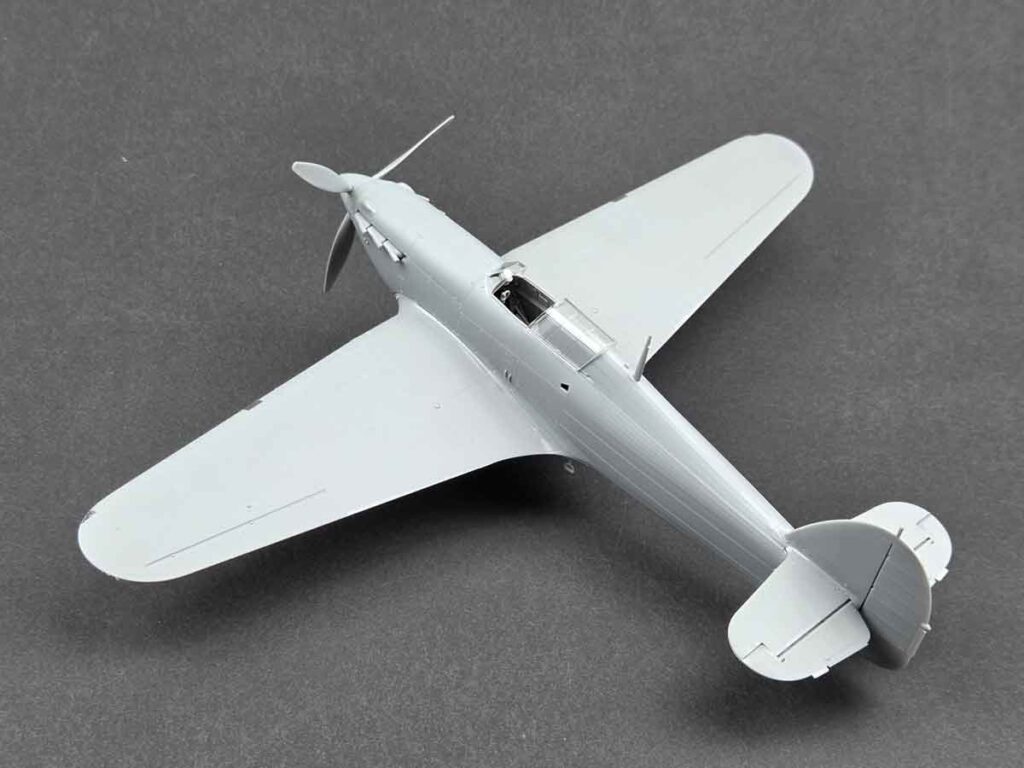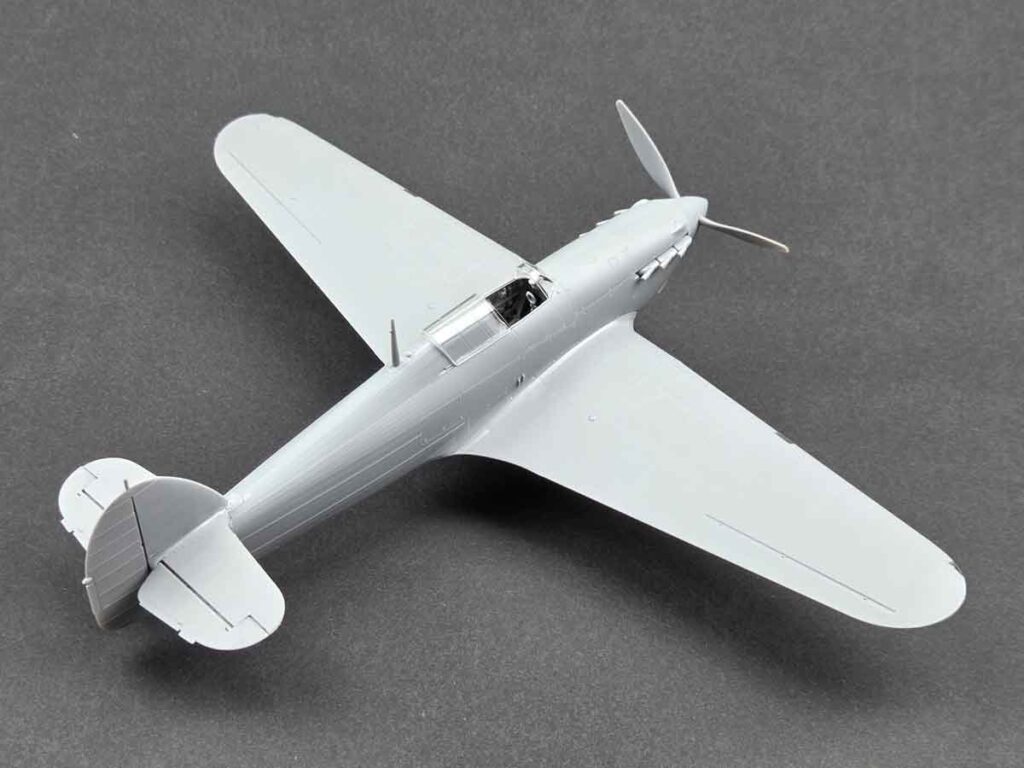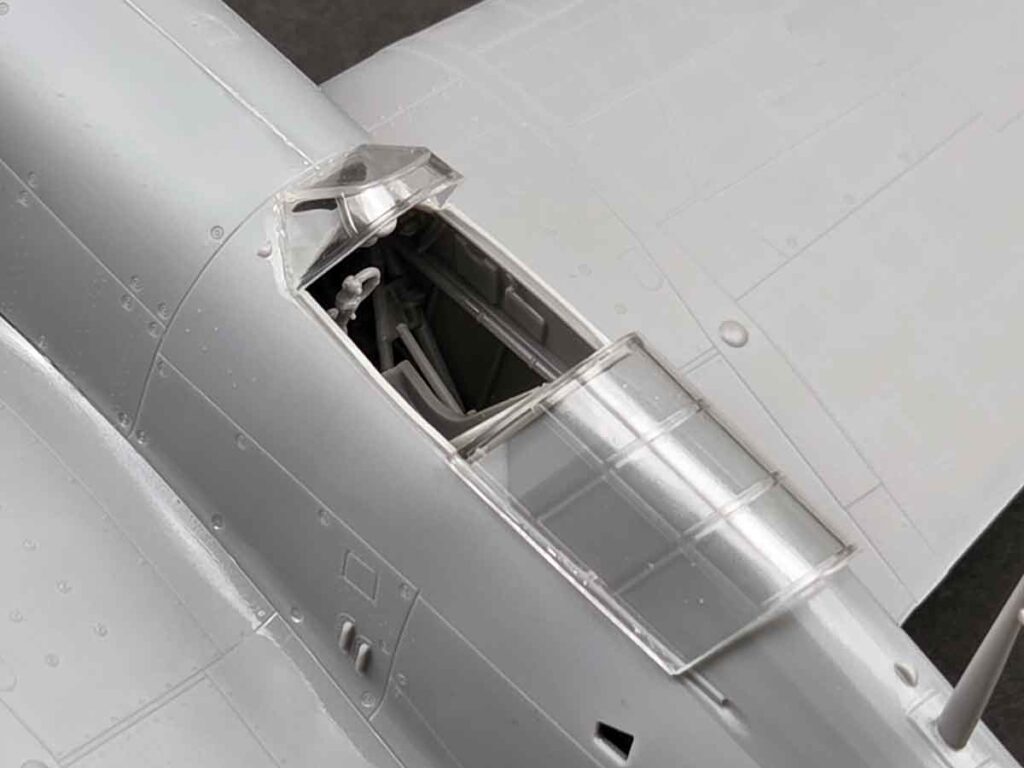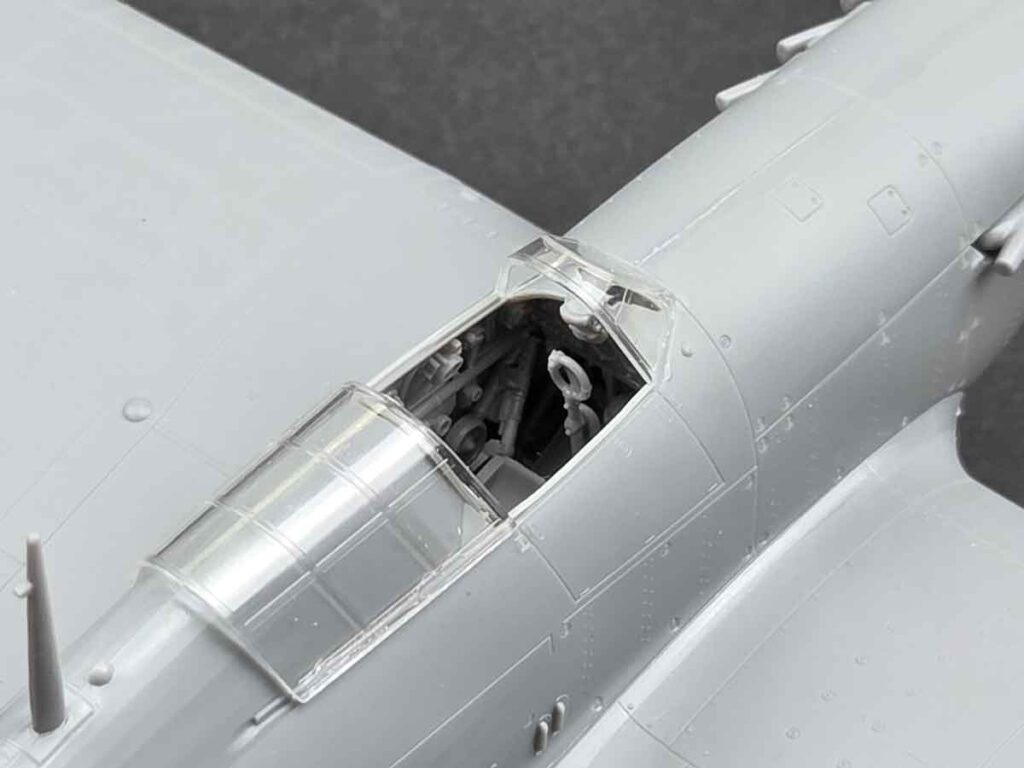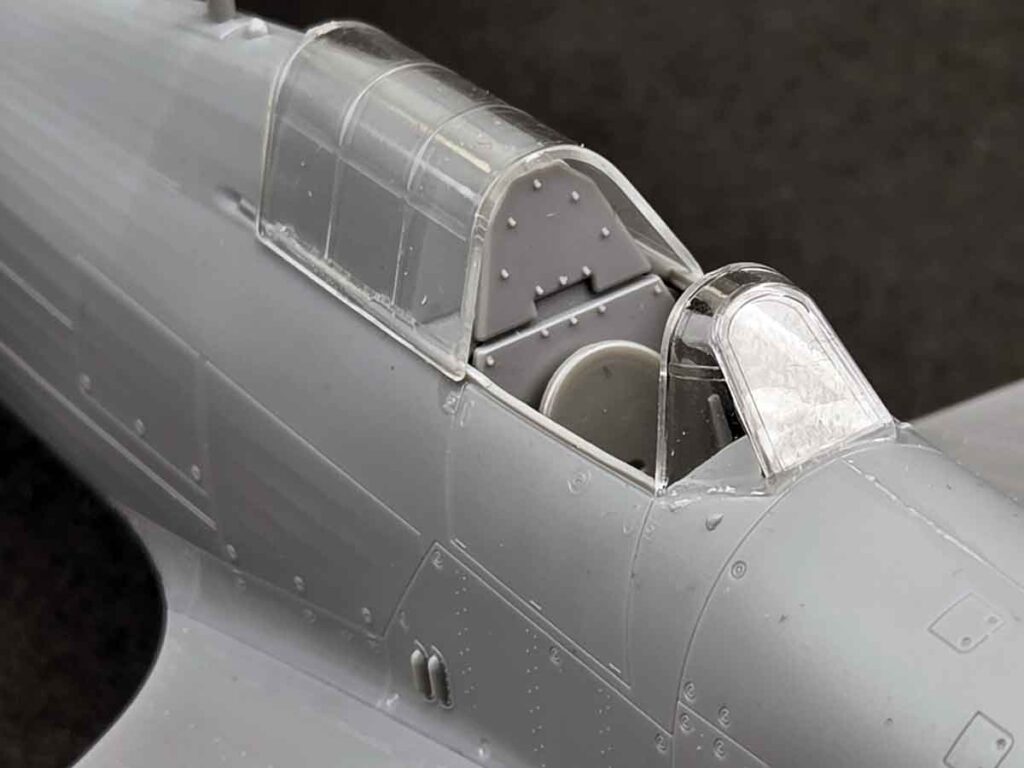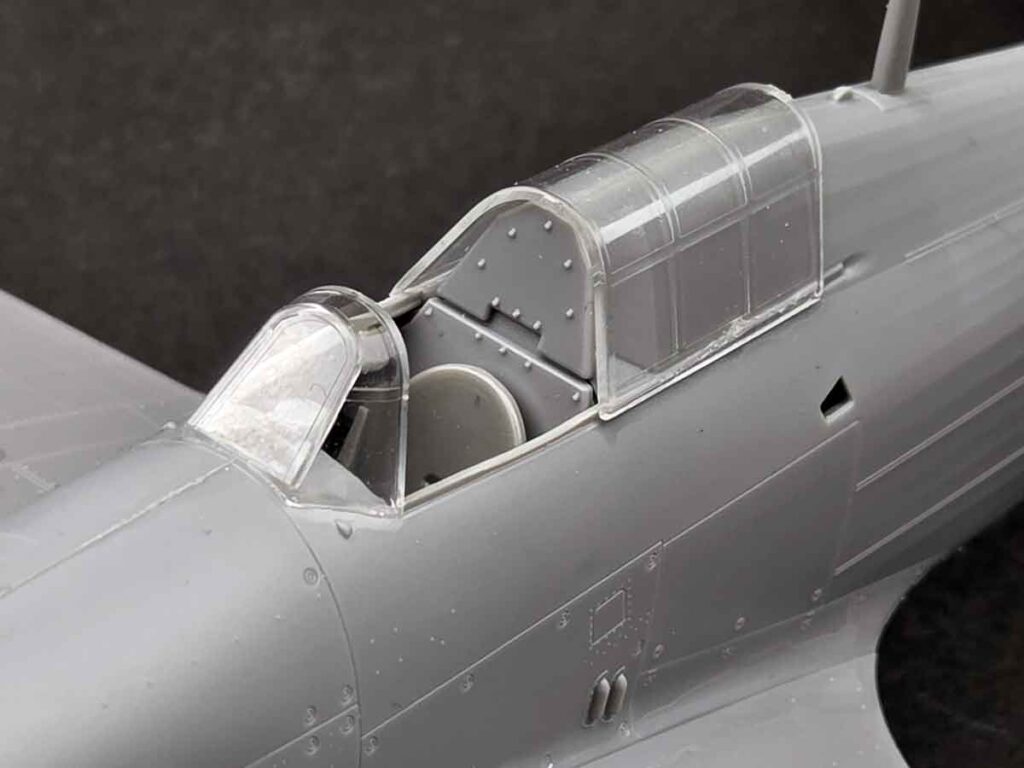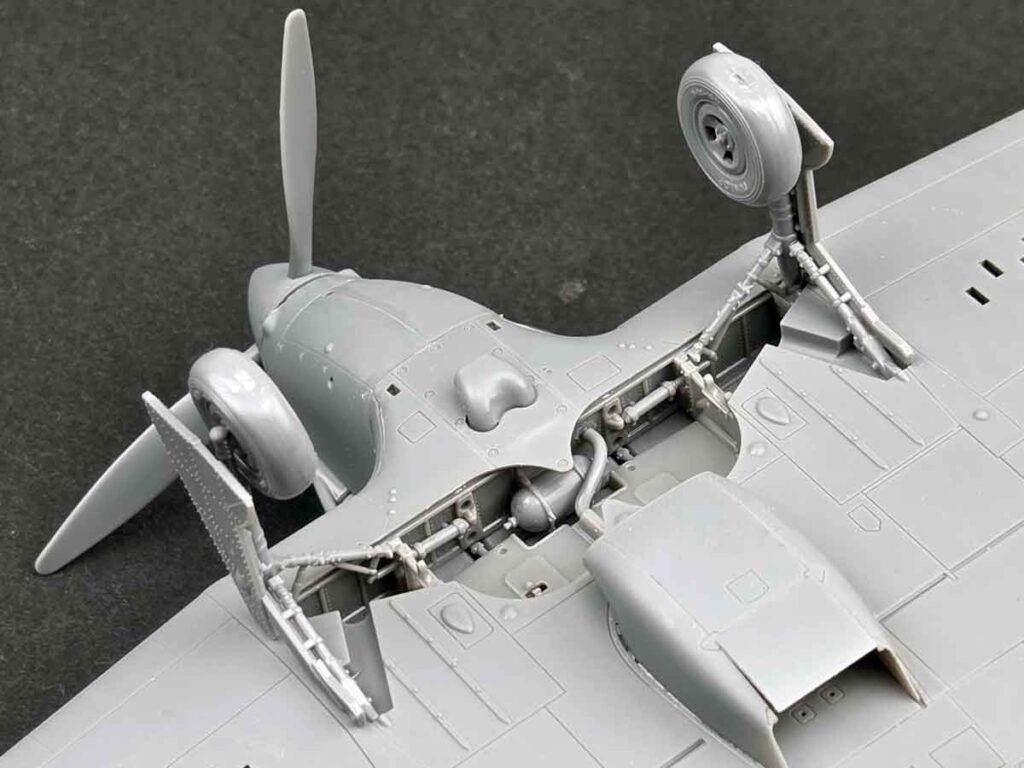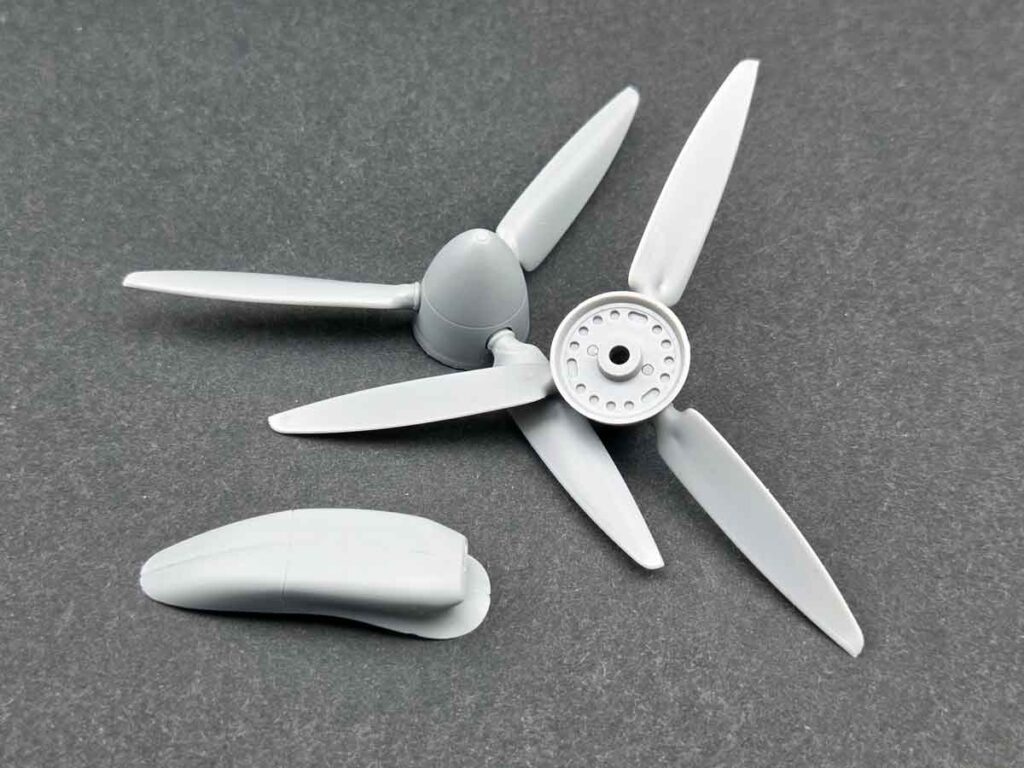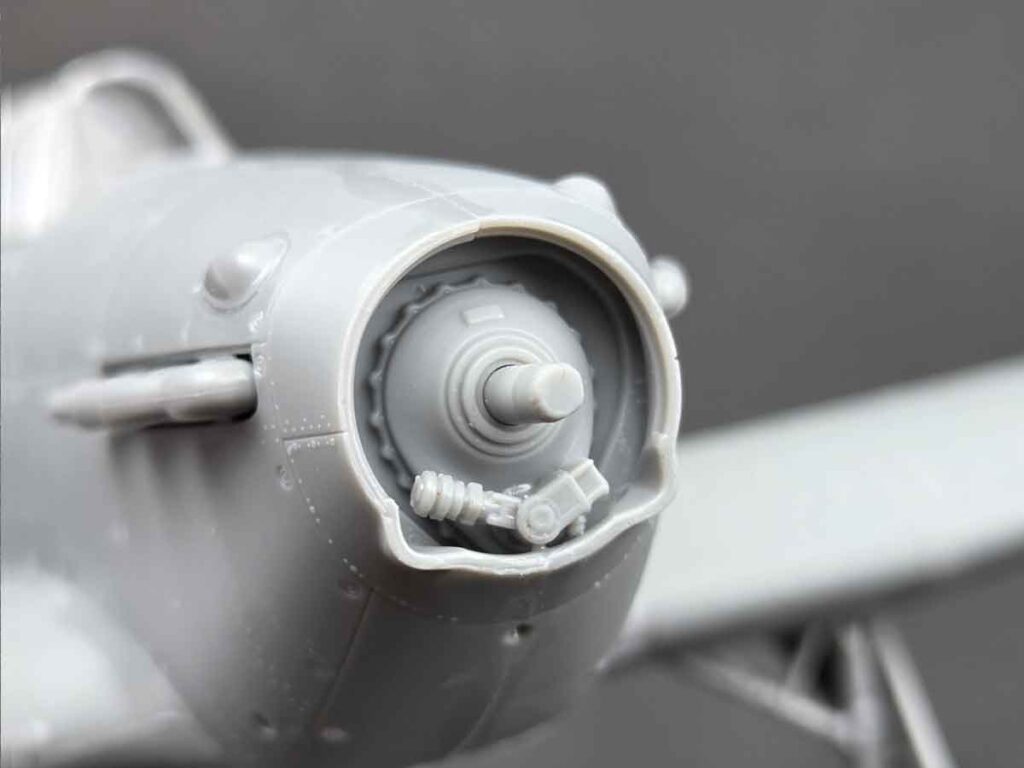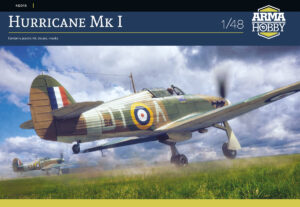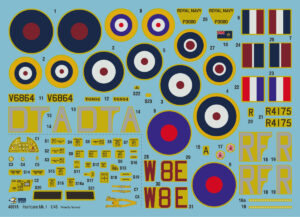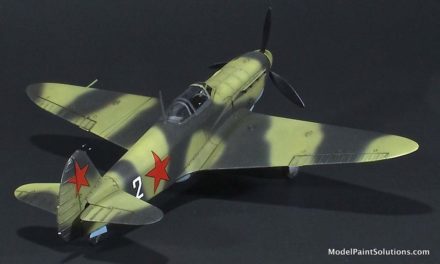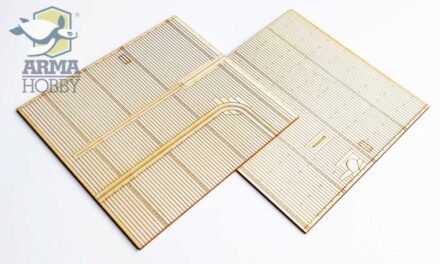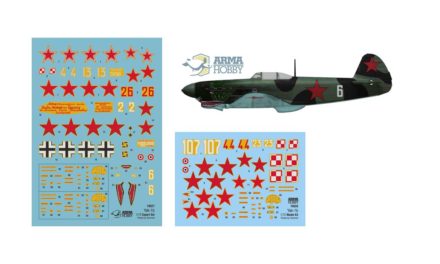The first complete Hurricane Mk I 1/48 model has made it onto my workbench. This is one of the most important stages before the start of production — checking parts fit, surface detail quality, evaluating the test shots, and preparing the final adjustments that will appear on the sprues in just a few days. For me, it is also an important personal moment — my project has taken real shape for the first time. As you probably know, it is a continuation of our Hurricane Mk II family, but with many new elements characteristic of the early variant.
Interior assembly – familiar, but still satisfying
The cockpit and wheel well are nothing new for us, but assembling them still brings a lot of joy. Each part adds to the structure and builds up a richness of detail that, for the first time, can be appreciated not on a monitor, but in real life.
The new wing consists of only two parts — and it is the upper half that carries most of the interior detail. This stage went smoothly without any issues. Once the wing was closed, I could move on to the next step.
The new fuselage – differences compared to the Mk II
The fuselage sprue differs from the previous versions in one important feature: the front of the fuselage is open. This exposes the engine block representation, which we added for a reason. Once the propeller is installed, the engine won’t be visible, but on early Hurricanes the two characteristic side intakes reveal part of the engine — so this detail had to be included.
The module consisting of the front frame, propeller shaft, and rear closure is assembled at the same stage as the instrument panel — before closing the fuselage. Everything fit correctly, and the structure maintained proper stiffness during assembly.
Joining the wing and fuselage, and new parts
After joining the fuselage with the wing, assembly proceeds very similarly to the Mk II kits. The differences concern mainly:
- the new propellers (two blade types),
- three types of spinners,
- the new radiator housing.
This stage also posed no difficulties.
Test shots – final refinements before production
Since these are test shots, some elements do not yet have all the final milling details, and a few minor short shots and excess plastic appeared during assembly. This is completely normal at this stage — all corrections are already planned and will be implemented in the next few days before the mould enters full production cycle.
What matters most is that the geometry, fit, and overall construction of the kit are already fully ready.
Final adjustments before production
The assembled model shows that the project is structurally correct and fully consistent with the assumptions. The test shots revealed only minor surface imperfections and the absence of a few final details, which will be added before the mould is launched within the next few days. After these simple corrections, the kit will reach full production readiness — and the Hurricane Mk I 1/48 will be on its way to you soon.
See also:
- See the Hurricane Mk I model in the Arma Hobby store link
Trzy Hurricane’y z premierowego pudełka 1/48… a malowania są cztery!
Wanted to be Philanthropist, statesman and patron of the arts. Temporarily focused on developing scale model production in Poland. Co-founder of Arma Hobby. Designer of kits: TS-11 Iskra, PZL P.7a, Fokker E.V, PZL P.11c, Hawker Hurricane, Yak-1b, FM-2 Wildcat, P-51B/C Mustang and 1/48 Hurricane.
This post is also available in:
 polski
polski



